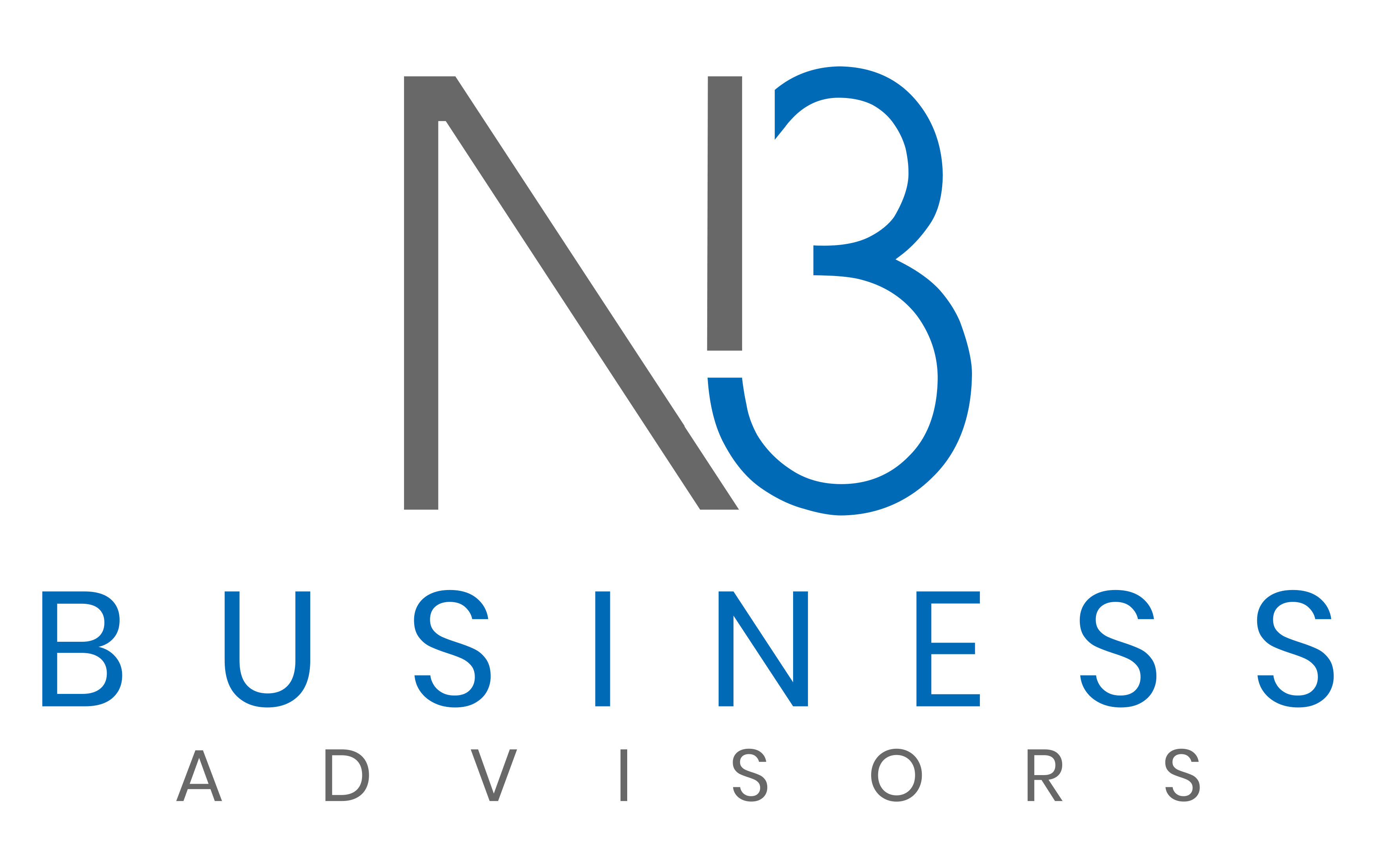Managing the finances of an equipment rental business is a balancing act. You’ve got revenue streams from rental contracts, maintenance costs, insurance, taxes, and payroll to juggle. If you’re in this business, you already know that it’s not just about renting out equipment and collecting money. There’s a strategic approach that goes into managing every dollar to ensure your company grows sustainably and remains profitable.
I’m Nitin Khanna, founder of N3 Business Advisors, and today, I want to talk to you about how to manage the finances of your equipment rental business effectively. Whether you’re a seasoned entrepreneur or just starting out, these financial management tips will help you create stability and long-term growth for your business.
Let’s break it down step-by-step, and by the end, you’ll have actionable strategies to make sure your equipment rental business thrives financially.
Why Financial Management Is Crucial for Equipment Rental Businesses
When you’re running an equipment rental business, your equipment isn’t just a product – it’s your lifeblood. Keeping track of where your money is going and how your assets are performing is essential to the health of your business. The financial management process helps:
- Maximize Profitability: Managing your expenses and revenues efficiently will ensure you’re maximizing your margins.
- Ensure Cash Flow Stability: Good financial practices will keep your cash flow steady, which is crucial in a capital-intensive business.
- Enable Growth: With better financial control, you can reinvest in new equipment, expand into new markets, or offer better terms to customers.
- Mitigate Risks: Properly managing finances reduces the chances of being blindsided by sudden costs or downturns in the market.
With all that said, how do we get from understanding the importance of finance management to actually running a tight financial ship? Let’s get into it.
Step 1: Separate Personal and Business Finances
First things first: keep your personal and business finances separate. I’ve seen business owners in the construction and equipment rental industry who mix the two, and let me tell you, it’s a nightmare when tax season rolls around or when you’re trying to assess the financial health of your business.
Here’s how to keep them separate:
- Open a Business Bank Account: Get a dedicated account for your business transactions. This will make it easier to track income and expenses.
- Get a Business Credit Card: Use this for business-related expenses like repairs, fuel, or office supplies. It’ll help you build business credit too.
- Pay Yourself a Salary: Instead of dipping into business funds whenever you need money, establish a regular salary or owner’s draw.
These basic steps not only make your finances clearer, but they’ll also protect you from legal and tax-related issues down the road.
Step 2: Track Every Expense
It sounds simple, but in an equipment rental business, tracking your expenses is one of the most critical steps. You’ve got maintenance costs, insurance, wages, fuel, storage, marketing, and utilities – and that’s just the tip of the iceberg.
Tips for Tracking Expenses:
- Use Accounting Software: Platforms like QuickBooks or Xero make it easy to record and categorize your expenses. They also generate reports, so you can quickly see where your money is going.
- Create Categories: Break down expenses into categories like maintenance, insurance, payroll, utilities, etc. This makes it easier to identify which areas are eating into your profits.
- Automate Where Possible: Set up automatic payments for recurring expenses like insurance and lease payments. This ensures you never miss a due date and avoids late fees.
By diligently tracking your expenses, you’ll have a better grasp of where you can cut costs and where your biggest financial risks lie.
Step 3: Optimize Rental Rates
One of the most important financial decisions you’ll make is setting the right rental rates. Charge too little, and you’ll struggle to cover costs. Charge too much, and you’ll scare off potential clients. Finding the sweet spot is crucial.
How to Set the Right Rental Rates:
- Consider Equipment Costs: Factor in the cost of purchasing, maintaining, and insuring the equipment. You want to ensure that each rental helps cover not just operational costs, but also depreciation and future equipment purchases.
- Check the Competition: What are other businesses charging for similar equipment? While you don’t have to match their rates, this will give you a benchmark to start from.
- Offer Tiered Pricing: Consider offering daily, weekly, and monthly rental rates. This encourages long-term rentals and improves cash flow stability.
Remember, rental rates are not static. Review them regularly to ensure they’re aligned with market demand, inflation, and operational costs.
Step 4: Monitor Cash Flow Regularly
Cash flow is king in any business, but it’s even more critical in equipment rental, where large, upfront capital investments are required. Cash flow management is about ensuring you have enough liquid assets to cover day-to-day operations while still having room for growth.
Tips to Manage Cash Flow:
- Create a Cash Flow Forecast: Predict your future cash inflows and outflows for the next 6-12 months. This will help you spot potential shortfalls early.
- Stay on Top of Invoices: Make sure your clients are paying on time. Late payments can seriously disrupt cash flow.
- Build a Cash Reserve: Set aside a portion of your profits each month as a buffer for emergencies or unexpected expenses.
- Lease, Don’t Buy: For some pieces of equipment, leasing may provide better cash flow flexibility than purchasing outright, especially if you’re still growing.
Monitoring cash flow regularly keeps your business agile and prepared for both opportunities and challenges.
Step 5: Reduce Maintenance Costs Without Compromising Quality
Maintenance is one of the highest costs in the equipment rental business, but it’s necessary to ensure your equipment stays in good shape and safe for customers. However, there are ways to reduce maintenance costs while still keeping your fleet in top condition.
How to Reduce Maintenance Costs:
- Create a Preventative Maintenance Schedule: Instead of waiting for something to break down, be proactive. Regular maintenance checks help catch small problems before they become expensive repairs.
- Use Fleet Management Software: This software can automate maintenance scheduling, track equipment usage, and send reminders for service. This reduces the likelihood of missed maintenance.
- Train Your Staff and Customers: Proper training for both staff and customers on how to use the equipment can prevent damage and wear. The fewer mishaps, the lower your repair bills.
By focusing on preventative maintenance, you’ll not only reduce downtime but also keep your equipment in optimal condition, helping you save money in the long run.
Step 6: Leverage Tax Benefits and Deductions
As a business owner, it’s essential to take advantage of the tax benefits available to you. Proper tax planning can save you thousands of dollars a year, which is crucial for increasing your business’s bottom line.
Tax Deductions to Look For:
- Depreciation: The equipment you own depreciates in value over time. You can deduct this depreciation from your taxable income.
- Maintenance and Repairs: Any money you spend maintaining your equipment can be deducted as a business expense.
- Insurance Premiums: Your equipment insurance premiums are also tax-deductible.
- Office Expenses: If you have a home office or business location, you can deduct a portion of rent, utilities, and office supplies.
- Interest on Loans: If you financed equipment with a loan, the interest you pay is tax-deductible.
Consult with an accountant who specializes in business tax to ensure you’re taking advantage of every possible deduction.
Step 7: Build Strong Relationships with Suppliers
The right suppliers can make or break your equipment rental business, particularly when it comes to acquiring new equipment or repairing old ones. Building strong relationships with suppliers gives you negotiating power, which can help you get better deals, favorable payment terms, and quicker repairs.
How to Strengthen Supplier Relationships:
- Communicate Regularly: Keep the lines of communication open with your suppliers. Let them know about your future needs and any issues you’ve had in the past.
- Negotiate Payment Terms: Ask for longer payment terms, discounts for bulk orders, or flexible leasing options.
- Be a Reliable Customer: Pay your bills on time, and you’ll build trust with your suppliers, making them more likely to help you out when you need it.
By fostering these relationships, you can reduce costs, improve equipment availability, and even gain an edge over your competitors.
Step 8: Invest in Technology and Automation
In today’s world, technology plays a massive role in financial management. Investing in the right tools can streamline your processes, reduce human error, and give you better visibility into your financial health.
Technologies to Consider:
- Accounting Software: We touched on this earlier, but it’s worth repeating. Tools like QuickBooks, Xero, or FreshBooks will make your financial management far more efficient.
- Fleet Management Tools: Automate everything from rental schedules to equipment maintenance with software designed specifically for equipment rental businesses.
- CRM Systems: A customer relationship management tool helps you track customer data, rental histories, and payment terms, allowing you to optimize your rental strategy.
Automation will help you save time and make more informed decisions based on real-time data.
Final Thoughts
Managing the finances of an equipment rental business doesn’t have to be overwhelming. By following these steps – from tracking expenses and setting the right rental rates to managing cash flow and leveraging tax benefits – you can gain control of your finances and position your business for long-term success.
As the founder of N3 Business Advisors, I’ve helped many construction industry businesses, including equipment rental companies, navigate the complexities of finance management. It’s a critical skill, and with the right approach, it’s one that can fuel the growth of your business.
If you’re looking for more guidance or want to discuss how to take your equipment rental business to the next level, feel free to reach out! Let’s build something great together.
Disclaimer:
Any information provided here is for informational purposes only. It should not be considered as legal, accounting, or tax advice. Prior to making any decisions, it’s the responsibility of the reader to consult their accountant and lawyer. N3 Business Advisors and its representatives disclaim any responsibilities for actions taken by the reader without appropriate professional consultation.

